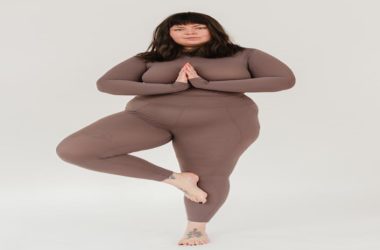Our sedentary work lives take a toll on our bodies and energy levels. Sitting at a desk for prolonged periods can lead to an array of issues such as poor posture, tight muscles, and reduced circulation. Incorporating yoga at work is an excellent way to counteract these negative effects and boost productivity and energy levels. In this article, we will explore some of the best yoga stretches for the office.
Seated Cat/Cow Stretch:
How to Do the Stretch
– Sit comfortably in your chair with your feet firmly on the ground.
– Place your hands on your thighs, close your eyes, and take a deep breath in.
– As you exhale, round your spine and drop your head towards your chest. This is the cat position.
– On your inhale, lengthen your spine, lift your head, and arch your back. This is the cow position.
– Repeat for 5-10 breaths.
Benefits of the Stretch
The cat/cow stretch is an excellent way to improve spine health and increase circulation. It helps to relieve tension in the back and neck, which can become tight from prolonged sitting. This stretch also stimulates the digestive system, aiding in digestion and reducing bloating and indigestion.
To incorporate this stretch into your office routine, set a reminder every hour to take a 30-second break and perform the stretch.
Seated Twist:
How to Do the Stretch
– Sit tall in your chair with your feet on the ground.
– Place your right hand on the outside of your left knee and your left hand on the back of your chair.
– Inhale and lengthen your spine.
– Exhale and twist to the left, pulling gently with your right hand.
– Hold for 5-10 deep breaths, then repeat on the other side.
Benefits of the Stretch
The seated twist is an excellent way to improve digestive health and relieve stress. It stimulates the digestive organs, which can help relieve constipation and improve overall gut health. This twist also helps to release tension in the neck and shoulders, making it a great stretch for those who carry stress in these areas.
To incorporate this stretch into your office routine, practice it a few times a day, whenever you feel stressed or need a quick break.
Standing Forward Fold:
How to Do the Stretch
– Stand up and place your feet hip-width apart.
– Exhale and fold forward from your hips, keeping your knees slightly bent.
– Allow your head and neck to relax, and hold onto opposite elbows.
– Stay in this pose for 5-10 deep breaths, then slowly roll up to standing.
Benefits of the Stretch
The standing forward fold is an excellent way to increase circulation and relieve stress. It stretches the hamstrings, calves, and back, which can help to reduce tension in these areas. This pose also has an inverted quality, which increases circulation to the brain and can help to reduce mental fatigue.
To incorporate this stretch into your office routine, take a few minutes to stand up and practice it whenever you need a mental break or feel fatigued.
Shoulder and Neck Release:
How to Do the Stretch
– Sit tall in your chair with your feet on the ground.
– Bring your right arm behind your back and your left hand to the top of your head.
– Gently pull your head towards your left shoulder, stretching your neck and shoulder.
– Hold for 5-10 deep breaths, then repeat on the other side.
Benefits of the Stretch
The shoulder and neck release stretch is an excellent way to reduce tension in the neck and shoulders. These areas can become tight and painful from prolonged sitting and computer work. This stretch also helps to improve posture, which can reduce the risk of injury and pain.
To incorporate this stretch into your office routine, practice it a few times a day, especially when you feel tension in your neck and shoulders.
Desk Yoga Poses:
Explanation of Several Desk Yoga Poses
There are several desk yoga poses that you can practice to increase energy and productivity during the workday. These include:
– Desk Chaturanga: Placing your hands on your desk and lowering your body into a push-up position.
– Desk Plank: Holding a plank position with your arms on your desk.
– Wrist and Finger Stretches: Stretching your wrists and fingers to relieve tension from typing and using the computer.
– Eagle Arms: Stretching your upper back and shoulders by crossing your arms in front of your chest and placing your palms together.
– Seated Pigeon: Stretching your hips and glutes by crossing one foot over your opposite knee while sitting.
Benefits of Practicing Yoga at Your Desk During Work Hours
Practicing yoga at your desk can help to increase energy and productivity by reducing tension and stiffness in the body. These poses can also help to stimulate circulation, reducing the risk of varicose veins and other circulatory issues. Taking a few minutes to stretch and move throughout the day can also help to improve mood and reduce stress.
To incorporate these desk yoga poses into your workday, set a reminder to take a few minutes every hour or so to move and stretch.
Conclusion:
Incorporating yoga into your workday can help to keep you energized and productive. These office-friendly yoga stretches and poses can counteract the negative effects of prolonged sitting, increase circulation, and reduce stress and tension in the body. So why not give them a try today? Your mind and body will thank you!





